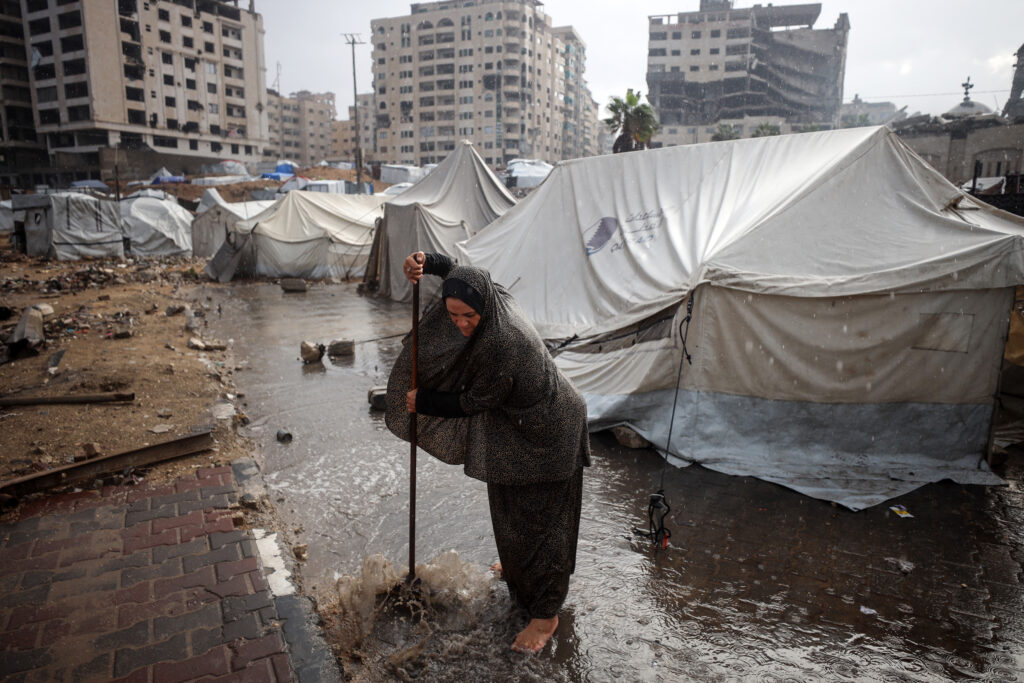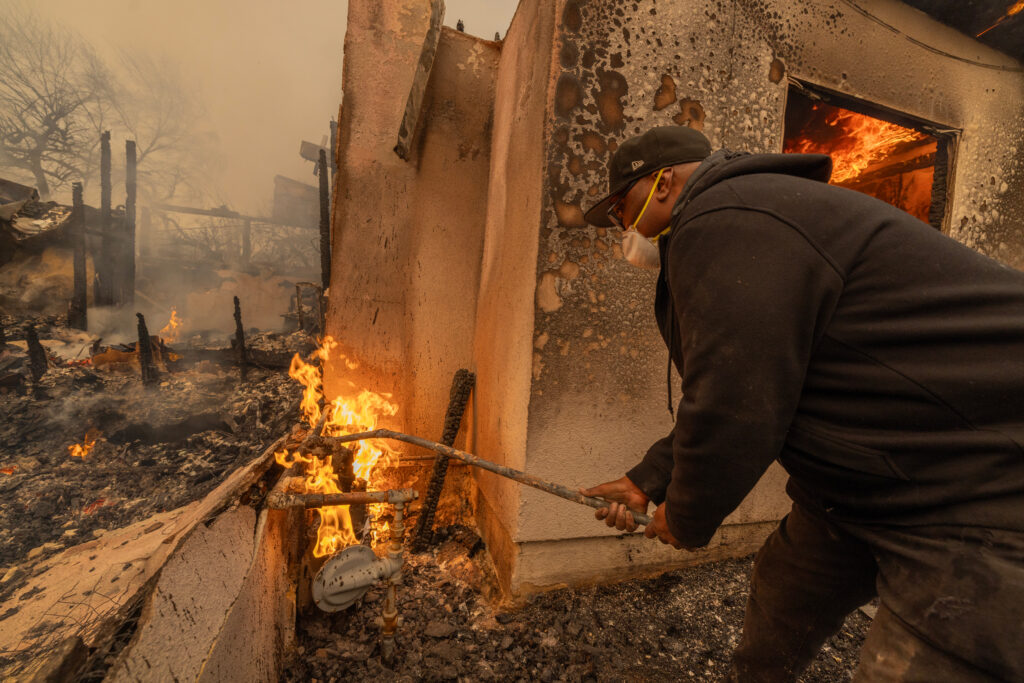In less than half a day, you could walk all the way around the 10 acres the endemic species Tiehm’s buckwheat calls home in the Silver Peak Range of Nevada, where the small wildflower with yellow pom-poms grows in part thanks to the soil beneath it being filled with lithium and boron.
Those two minerals have attracted the attention of Ioneer LLC, a mining company, which if permitted to begin construction would destroy 22 percent of Tiehm’s buckwheat’s critical habit while degrading 100 percent of the flower’s range via dust from construction, the disruption of pollinating insects and the introduction of more invasive plant species to the area, according to a report sent to the Bureau of Land Management by environmental groups and scientists fighting to save the species from the proposed mine. The BLM is overseeing the permitting of the project given its location on public lands owned by the federal government.
“The current mine plan would result in the extinction of Tiehm’s buckwheat,” said Patrick Donnelly, the Great Basin director for the Center for Biological Diversity, which has led the push to save the wildflower, at a press conference announcing the findings Monday.
We’re hiring!
Please take a look at the new openings in our newsroom.
See jobs
The coalition’s review comes as the public comment period for the draft environmental impact statement for the Rhyolite Ridge mine comes to a close and is the latest in a years-long push to save Tiehm’s buckwheat. In 2017, Ioneer proposed mining the area, particularly for lithium, the metal critical for the energy transition needed for the batteries essential for electric vehicles and storing energy from solar and wind farms being built at scale around the country.
In a statement, Ioneer said the mine’s plan “ensures there will be no direct impacts to Tiehm’s buckwheat subpopulations” on the 10 acres of land where Tiehm’s buckwheat is currently located and “minimized and mitigated for indirect impacts within the plant’s critical habitat”— land protected under the Endangered Species Act where the wildflower could eventually grow. The species has seen steep population declines since the mine was first proposed, due to rodents eating them, according to the U.S. Fish and Wildlife Service, though environmentalists dispute that.
However, Ioneer conceded the mine “will eventually incur into roughly 21.6% of the critical habitat—but 10% will be impacted during the project’s first ten years.” The company claims it will revegetate the disturbed land with native plants, including replanting Tiehm’s buckwheat, and has spent millions of dollars in conservation efforts for the endangered species and will continue to do so.
“Ioneer strongly believes Tiehm’s buckwheat can and will safely coexist alongside our operations,” said Chad Yeftich, Ioneer’s vice president of corporate development and external affairs.

From the get-go, the project drew scrutiny from environmentalists hoping to protect the wildflower, which led the U.S. Fish and Wildlife Service to list the plant as endangered in late 2022 following a lawsuit and a public campaign supporting listing the species. Despite the listing under the Endangered Species Act, intended to prevent the species’ extinction, Tiehm’s buckwheat continued to face threats to its habitat from cattle grazing and Ioneer, which trespassed onto the wildflower’s protected habitat.
Through it all, the proposed mine has continued to move forward. The Australian mining company has secured agreements to provide lithium to automotive companies, including Toyota and Ford Motor Company, and last year received a loan of $700 million from the Department of Energy contingent on it passing its environmental review, something Donnelly said was the equivalent of the federal agency putting “their thumbs on the scale with the permitting process.”
The project is estimated to hold enough lithium for nearly 370,000 electric vehicles each year.
The story of Rhyolite Ridge has become one of the biggest fights on how the renewable energy transition can impact intact landscapes and protected species, an issue of growing concern as the Biden administration attempts to confront climate change.
“Our public lands have an important role to play in powering the economy of the future,” said BLM Director Tracy Stone-Manning when the draft environmental impact statement for the project was released in April. “Under President Biden’s leadership, BLM continues to support the development of critical minerals to power electric vehicles, renewable energy, new technologies, and critical infrastructure.”
Under the BLM’s current preferred plan for the mine, Rhyolite Ridge would disturb 2,271 acres of surface area, including a 960-foot-deep open pit across over 200 acres necessary to extract the mineral just outside of the wildflower’s protected habitat and 1,300 acres where leftover waste from digging the mine will be stored. In total, the mine would require 7,166 acres, the vast majority of which is public land.
“Whether in just a few years or whether across the centuries, the preferred alternative will inevitably result in E. tiehmii [the scientific name for Tiehm’s buckwheat] ending up at the bottom of an open pit,” reads a letter signed by 100 scientists submitted to the BLM in opposition to the mine.
Impacts of the mine would go beyond just one rare wildflower. The report found the mine would impact two other endangered species because water consumption from the mine would further draw down a groundwater aquifer that already has too much water being pumped out of it, potentially impacting other water users in the area. The dig would also violate treaty rights of the Western Shoshone, whose historical homelands contain the site of the mine.
“Do they [the BLM and company] understand that this so-called green energy will not save the planet while they simultaneously destroy ecosystems?,” said Fermina Stevens, executive director of the Western Shoshone Defense Project.
This story is funded by readers like you.
Our nonprofit newsroom provides award-winning climate coverage free of charge and advertising. We rely on donations from readers like you to keep going. Please donate now to support our work.
Donate Now
Donnelly said the draft environmental impact statement is “riddled with errors, omissions, obfuscations, unsupported assertions and intentionally withheld data” and violated multiple laws, including the Endangered Species Act, the National Environmental Protection Act and Section 106 of the National Historic Preservation Act, which requires federal agencies evaluate the impacts a project will have on historical and cultural resources.
Ioneer also lacks the necessary water usage permits for the mine, which initially would require dewatering the mine, essentially removing water that fills the pit after the digging punctures the aquifer, and later involve pumping water through a pipeline from agricultural land the company purchased miles away for mining activities. Doing so, however, requires getting state regulators to approve changing the place and manner of use for the water and proving that it won’t impact other users, conditions Nevada has begun to more strictly enforce as drought continues to impact developments in the Southwest.
The BLM plans to have a record of decision for the mine by October. The agency did not respond to a request for comment before publication.
“This is not just about one project,” Stevens said. “But the many that will follow to destroy the land that does not belong to them.”

















